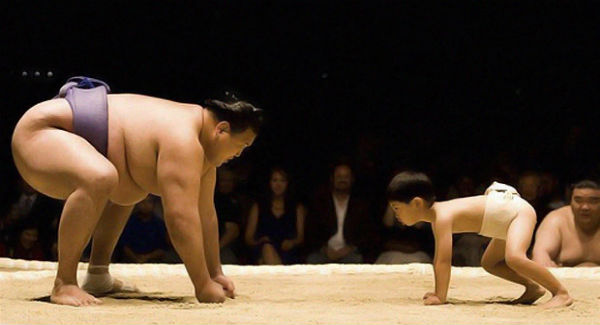Matching opponents in competitive sports can be a complex or simple process depending on the type of sport. There are four (4) main ways of matching opponents: age, size, sex and skill level. The first two (2) relate to the growth and development of the athlete.
Matching Opponents by Growth and Development
Age
The first level of matching opponents is by age. Most sports, including football, rugby league, ice-hockey, netball, athletics etc, begin by matching opponents through age groups. Most clubs begin at under 6 and then progress each year until under 16 or 17, where is often progresses by 2 or 3 years until under 21. After 21 years of age, athletes compete in an opens competition, until they reach an older age and can compete in masters competitions, such as the masters games.
Matching opponents by age is done to group athletes together both psychologically and physically. Athletes at age 8 tend to approach their sport with a similar psychological capacity and division making in relation to the sport. They are also often of a similar size and skill level. This results in a safer sporting environment for the athlete, minimising injuries and enhancing wellbeing.
However, age is limited in its ability to reduce injuries and to appropriately match opponents. This is because children and young athletes grow and develop at varying rates and have varying levels of skill. And because adults can begin a sport later in life. It is not fair or safe to match a cognitive learner against an autonomous athlete for any sport, let alone AFL or sumo wrestling.
Size
There are many sports that not only match opponents by age, but also by size. Many of the combat sports, such as: boxing, mixed martial arts, and greco-roman wrestling. Size has also been used to match opponents in particular rugby competitions.
Matching opponents by size helps to reduce the risk of injury as athletes are not forced to compete against people to much bigger than them. It is not safe to ask a 40Kg 13 year old to tackle a 80Kg 13 year old, even though they are the same age.
Matching opponents by their growth and development helps to promote safety in sports as player compete against people of the same age and similar size to help prevent injuries. Matching opponents by growth and development is limited though, as many sports also require great skill. Athletes competing against each other with varying skill levels can also lead to injury.
Matching Opponents by Skill Level
Sports require skill, and athletes have varying skill levels regardless of age and size. Often age and size influence skill level, and that is one of the reasons why they are so useful in matching opponents. But, skill level should also be used to match opponents in sport to promote the athletes wellbeing.
Almost every sport matches opponents using skill levels. Often this is done by grading teams, so that there is a first division or first grade team that is highly skilled and they play against other highly skilled athletes of the same age. Football is one such sport that matches opponents by age and skill level, having many grades including state league and premier league competitions that are matches by skill level.
Furthermore, many combat sports use a grading system. many martial arts use a belt system that the athlete progresses through, that indicates skill level. Thus, a 15 year old athlete competing in a Kung Fu tournament will only compete against athletes with the same belt, whether that be green, grown or black. This helps to ensure safety in the sport and promotes the athlete’s wellbeing.
Matching Opponents by Sex
Most sports competitions also match their athletes by sex. Boys play boys, girls play girls and men play against men, while women play women. This matching of opponents is also done for safety reasons, to promote the wellbeing of the athlete. Males have more testosterone than females and so develop larger and stronger muscles than females (this is of course a generalisation). Athletes are matched by sex, as well as age and size, so that there is an opens women competition for tennis and an opens mens competition. It would not be fair for them to compete against each other, especially given that men can serve up to 30 Km/h faster than there female counterparts. This could inflict injury and therefore, separate competitions are created.

